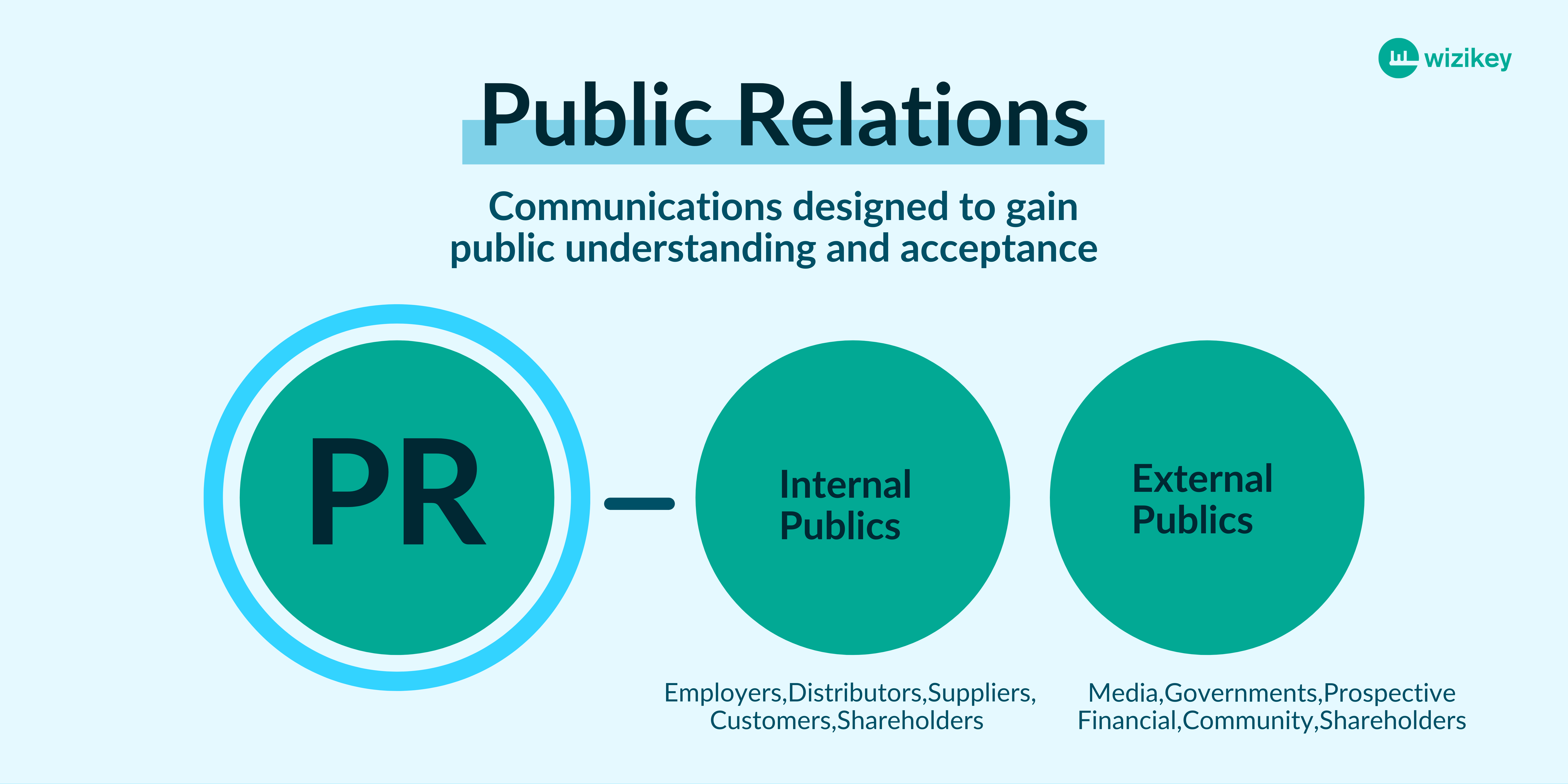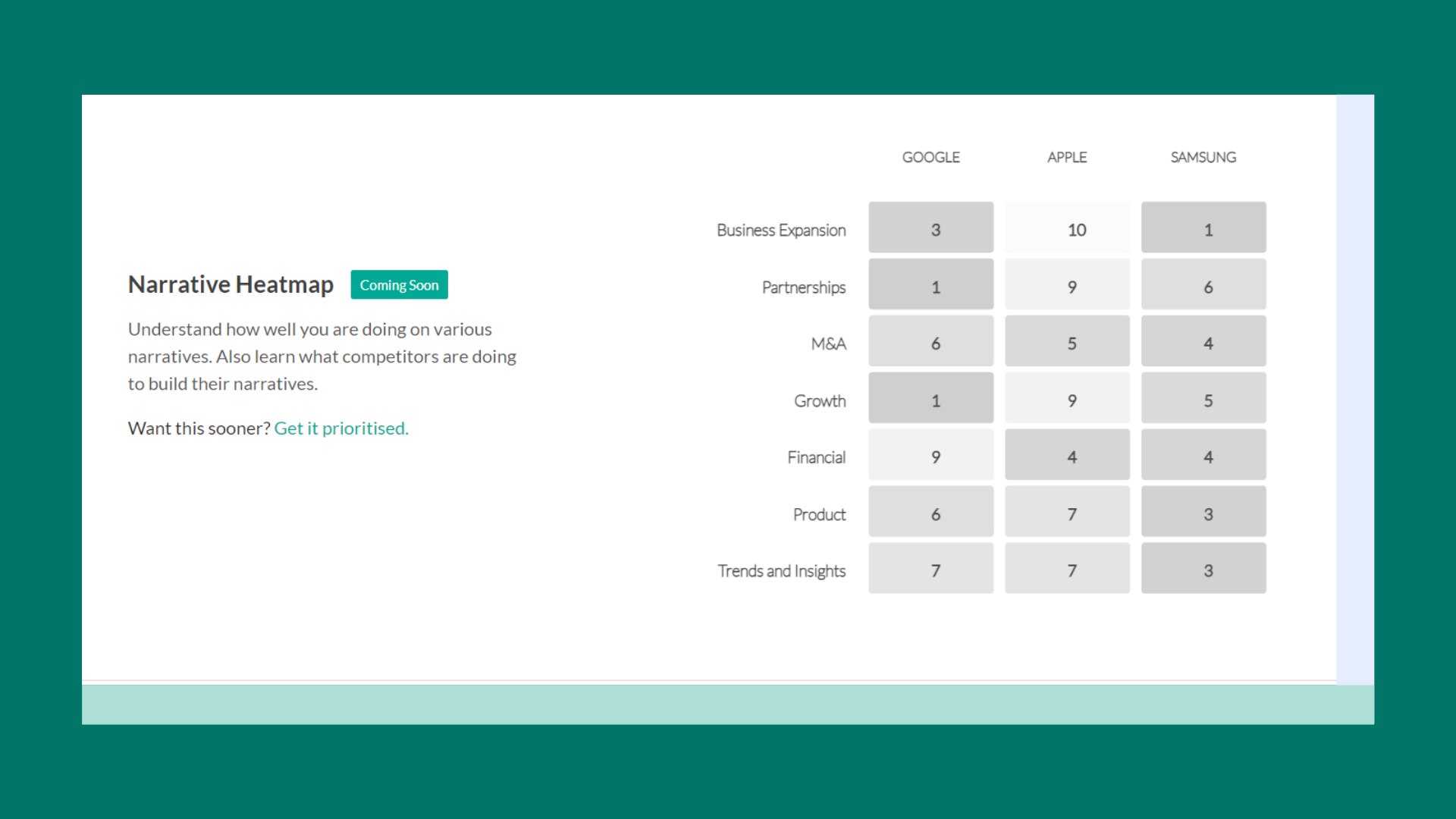You are at the right place if you are trying to find a way to use PR metrics to drive your Comms Strategy. As a Comms professional you have to carve out a strategy that speaks to all your audiences, including customers. And depending on the stage of your brand, you are likely to build a brand strategy with a deep focus on investors or employees or customers or industry or govt or ALL of them.

Absolute PR coverage does not feed into strategy. Here are a few metrics that you can use to build your strategy.
Share of Voice
Share of voice is a strong indicator of recall of the brand. It can be calculated by using the following formula
= % (Total mentions of your brand/Total mentions of all brands in the competitive set)
If your share of voice is high, you can move on. However, if it is low, then plan for press announcements that can augment your share of voice. Share of voice comes from high proactive PR and association of your brand to the industry.
Typical press announcements that can get you interest from journalists to build a higher recall:
- Growth: From toppling numbers to other growth metrics, a growth announcement evokes healthy interest from journalists specific to your industry
- Hiring announcement: If you have hired CXO positions that have been kept under wraps, then plan for the next announcement on appointments. Check with your HR department on the announcement. You might also find a bonus announcement on the overall hiring success of your company. Eg: XYZ company doubles its headcount, sets up an R & D team
- Partnerships: If you have been a fast-moving company then check with your product and sales team if they can share the latest client acquisitions and partnerships.
- Build industry recall: The other good way to improve SOV is to write to all journalists who have covered your competition on a regular basis. And soon you will find them mentioning your name in the industry set.
- Establish narratives that work for the industry (Narrative Analysis): What’s the prominent narrative of your brand. Are you seen as a tech company or a growth company? Most of these perception analysis will help you to understand if you are speaking the right language to your investors, prospective employees, partners, etc., via the press.

Narratives do not work exclusively with each other. You may want to be known as a tech brand, employee-friendly company, or a hyper-growth company. You can have an overlay of narratives, especially based on the overall brand Physio.
Leadership Share of Voice
Chief Communications role is typically that of a CEO. Yes, you read it right. Brands’ CEOs and CXOs play a critical role in building the credibility of the brand with the Press. This is hard to do and takes a proactive involvement of CXOs to build it. Airbnb’s Brian Chesky is a proponent of PR. Here’s what he has to say about it

To make this happen, you should look for the following metrics to build your Leadership SOV.
Messaging Analytics
If your brand is well associated with certain phrases, find out the depth of usage and your association with those phrases. While this is hard to do on an excel sheet, Wizikey’s Attribute Affinity can solve this in minutes. If your attribute association is low, then start building it by using a messaging framework. Use the messaging framework to identify with the journalists and buzz words in your industry Eg: No-Code, Future of Work, etc. Share this with your Leadership before every press conversation and see how your strategy gets your credibility in the right direction.

Weighted Share of Voice
Just getting a high number of articles may not be the best way to find impact. A weighted share of voice helps understand if you are getting the right amount of buzz and visibility. A higher weighted SOV is the ultimate score to know if you are hitting where it matters. To get a high SOV, media pitching is one of the most critical aspects. Effective media pitching is like business development. Target the right journalists (by finding top journalists of your industry), improving engagement with the right subject lines, and with content that has high appeal.
Sentiment
One of the big areas of work for the Comms team is to maintain a healthy sentiment around customers. Measuring sentiment can help you proactively work to associate yourself with positive phrases. A positively perceived brand also gets lesser brickbats from the press.
Media Campaign metrics
On an everyday basis you can also move tactically to leverage your media approach. This unique set of metrics is designed with CRM for journalists:
Open rate
Monitor the open rate of your media pitches. A high open rate indicates good subject lines, good targeting, and selection.
Engagement
Monitor engagement movement week on week and identify the journalists who are gaining familiarity with your brand. Story pitching will work better with a higher engaged journalist.
Reporter Reach
Track reporter and publication reach to increase breadth and depth of media campaigns. Plan campaigns specifically for the media. Eg: Identify the top writers on popular subjects in HR and pitch your company’s specific talk points that may be interesting for the journalist to cover.
Demo Wizikey to get a 14-day free trial and a quick insight into your PR metrics.

